10 Foods That Alleviate Dry and Flaky Skin
When it comes to our appearance, nutrition
is our best friend, so much so that the signs of a good or a bad diet
show up on our skin almost instantly. Don’t believe us? Then just try
and look back to the last time you had a bit too much salt and woke up
with puffy eyes the next day, or the time you forgot to drink enough
water and got dry chapped lips as a result. We’ve also touched upon the
topic of acne-causing foods in a previous article - 7 Kinds of Food
Known to Cause Adult Acne.
As you can see, there is a direct
connection between the foods we eat and how our skin feels, a connection
you can make use of to address the skin issues you are experiencing. In
the cold winter months, the most common skin concern is certainly skin
dryness and flaking.
To alleviate stubbornly dry skin,
moisturizing the skin is often not enough because you need to treat this
concern from the inside out by increasing your consumption of the right
kinds of foods.
Of course, staying hydrated is just as important, but that’s just common
sense. So, which foods should you eat to rehydrate and plump up dry
skin? The list below includes a variety of plant and animal foods that
have been proven to increase skin health and improve skin dryness, take a
gander.
1. Do not avoid oils
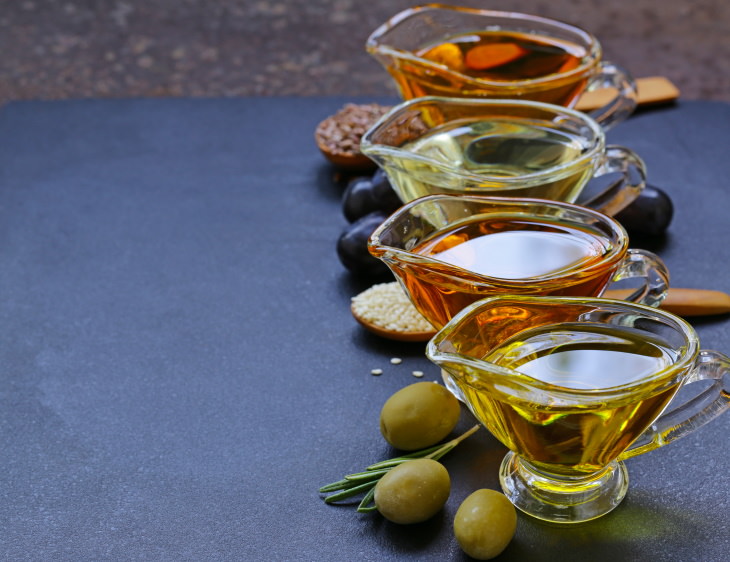

If you have dry skin, avoiding oils is
probably the last thing you want to do. This is because the very
definition of dry skin is skin deficient in lipids and consuming more
oils would help your body replenish those lipids. That doesn’t mean,
however, that you should start overindulging in dairy and fatty meat, as
those are rich in saturated fats that are bad for the heart.
So, instead, take the plant-based route and use extra virgin cooking
oils in your food. Since every cooking oil has its own unique cocktail
of antioxidants and fats, it’s nice to mix things up and use a variety
of oils. Some of the best oils for dry skin are:
Olive oil - this oil has a skin-calming, anti-inflammatory effect
and consists primarily of monounsaturated fat, which has been shown in
studies to also increase skin elasticity and firmness.
Flaxseed oil - may reduce sun damage and has demonstrated in studies
to improve skin hydration and make skin smoother when consumed
regularly.
Pumpkin seed oil - pumpkin seeds are an excellent source of vitamin A
and zinc, both of which are known to boost skin health, make it more
youthful, and improve the skin’s barrier function.
If you don’t have any of these oils at home or simply don’t enjoy them
in foods, don’t go out of your way and purchase them - any good quality
cooking oil will help dry skin because it’s rich in lipids.
2. Red grapes
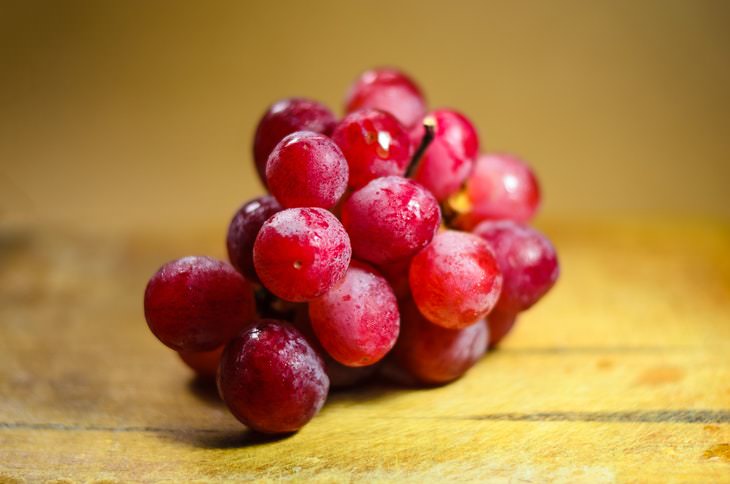

Though red grapes may not be accessible
where you live year-round, it’s an excellent fruit to consider if it is
available, especially since many people experience skin dryness all
year, and not only in the winter. The reason why red grapes are so
beneficial for dry skin is due to an ingredient called resveratrol
that’s present in the skin of red grapes.
Apart from the ability of this compound to reduce the effects of skin
aging, in-vitro studies also suggest that resveratrol also slows down
the production of free radicals that damage the skin and make it more
prone to conditions like dryness, acne, and even sun damage. In
addition, grapes are among the most hydrating foods out there,
consisting of about 82% water, so they make a great snack for those of
you with dry skin.
3. Salmon and other kinds of cold-water fish
Plants are not the only source of healthy
fats to consider if you have dry skin. In fact, eating more fish does
wonders for your skin’s health, as it contains an entire cocktail of
ingredients that improve skin health. As you probably know, fatty fish
like salmon, sardines, herring, and mackerel hold plenty of omega-3
fatty acids that are super healthy for our brain and the entire body.
This includes your skin, especially when it’s dry or inflamed.
In addition, fish is a source of protein, zinc, and vitamin E, all of
which reduce inflammation, help renew and produce new skin cells, and
boost overall skin health. "Certain fish like halibut and yellowfin tuna
also contain selenium, which preserves elastin in the skin, helping
your skin stay supple, smooth, and tight," a registered
dietitian also pointed out.
4. Nuts and seeds
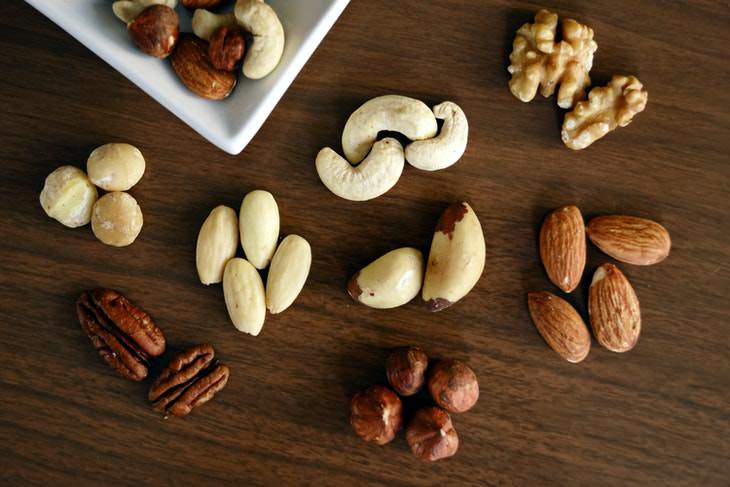
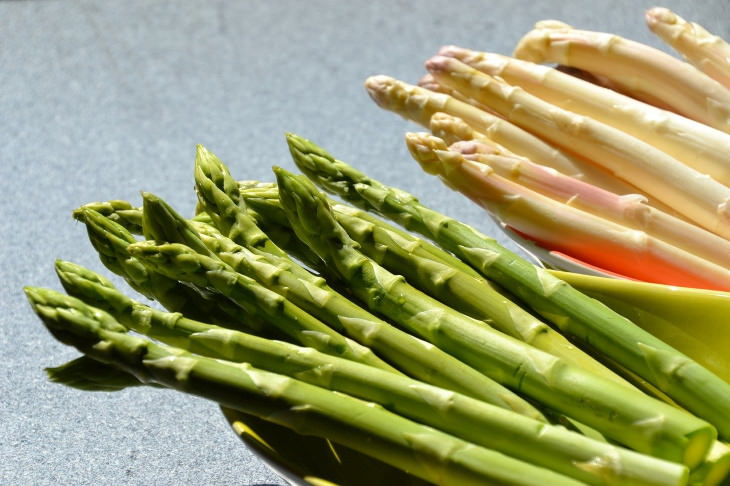

If you’re not a fan of fish, a great
alternative source of healthy fats is nuts and seeds. As we’ve already
mentioned, pumpkin seeds and flaxseeds are extremely beneficial for
those who have dry skin. Many seeds and nuts, particularly almonds,
sunflower seeds, pumpkin seeds, and walnuts are rich in both omega-3
fats and vitamin E, just like fish.
Consuming any kind of nuts and seeds will improve the lipid barrier of
the skin, help protect your skin from sun damage, reduce skin
inflammation, so they’re essentially a natural remedy for dry skin.
5. Asparagus

Asparagus is probably the easiest and one of the healthiest side dishes
imaginable - just trim of the woodsy ends and sautee them with a touch
of olive oil and maybe some garlic for 10-15 minutes, et voila, it’s
ready to serve. This peculiar looking vegetable is super rich in
vitamins, notably vitamin E, which guards your skin against the
elements, improves skin texture, and may even prevent wrinkles.
6. Tangerines and other citrus fruit
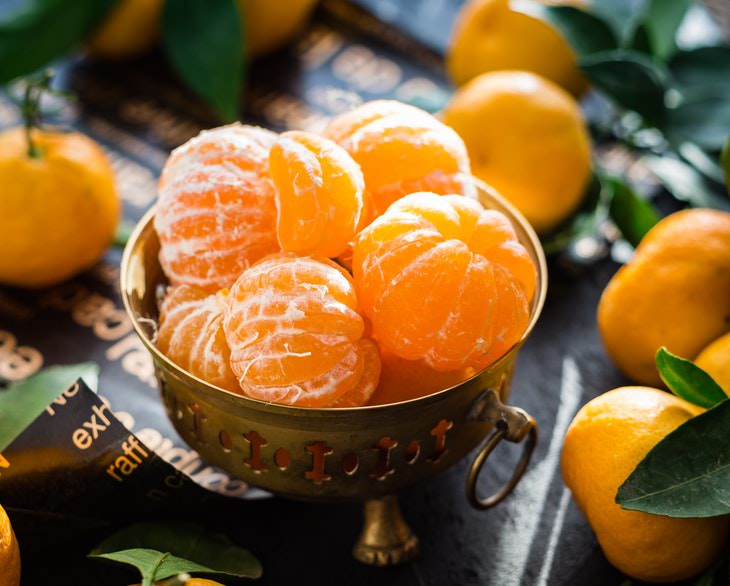
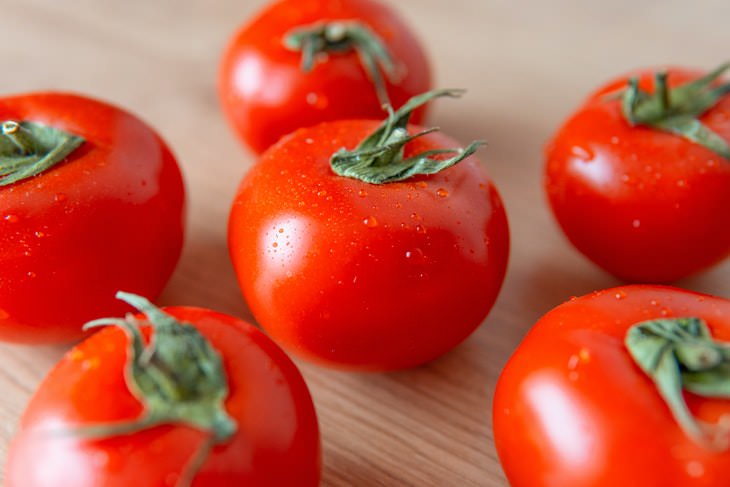

Apart from being a festive treat,
tangerines will also hydrate the skin and provide it with the
much-needed vitamin C. While many are aware of the role vitamin C plays
in immune health, few know of the importance of this vitamin for skin
health. As a potent antioxidant, vitamin C prevents environmental damage
to the skin, but the main function it plays in the skin is boosting
collagen production.
Collagen is a jelly-like building block of skin, the lack of which
causes wrinkles, loss of firmness, and dryness. Unfortunately, our skin
tends to slow down the production of collagen with age, but vitamin C
has been shown experimentally to speed up this process. In addition, not
consuming enough vitamin C can lead to dry and scaly skin on its own,
so make sure to consume plenty of foods that contain it to keep your
skin hydrated, plump, and healthy.
7. Tomatoes

Another excellent source of vitamin C
that’s actually savory and not sweet is the tomato. But that’s not the
only skin-beneficial ingredient tomatoes have, as they also contain
carotenoids, which are essentially different versions of vitamin A. More
specifically, tomatoes are rich in beta carotene, lutein, and lycopene.
These ingredients don’t just give tomatoes their bright color, they also
prevent your skin from being damaged by the environment, prevent
wrinkles, and promote collagen production.
8. Sweet Potatoes
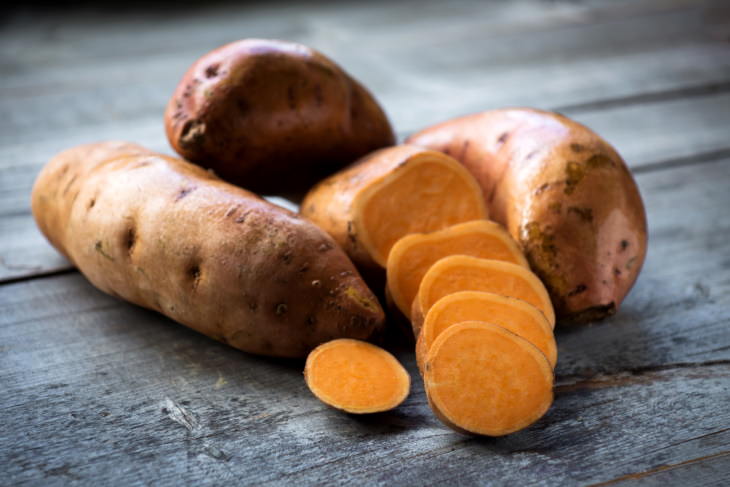

An alternative side dish to consider if you
have dry skin is sweet potatoes. As every orange fruit and veggie,
sweet potatoes are quite rich in vitamin A and beta carotene, the
skin-repairing and plumping benefits of which we’ve already touched
upon. Drizzle some pumpkin seed oil on top of baked sweet potato to add
some healthy fats, and you’re golden!
9. Cucumbers
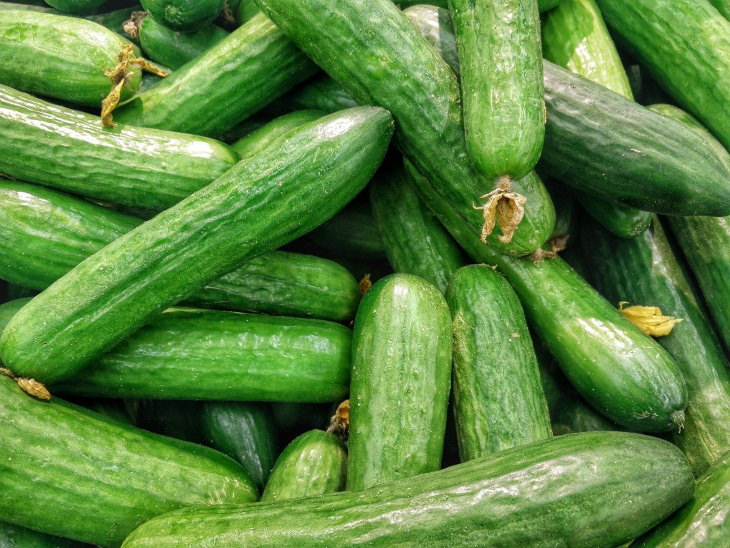

Cucumbers are famous for, well, being
mainly water. But that’s by no means a disadvantage, especially if your
skin is craving water so much. And while putting cucumber slices over
the eyes was once a popular skin treatment, dermatologists and
estheticians today say that you’re likely better off if you eat that
cucumber instead of putting it on your skin, preferably with the peel,
too. Apart from just hydrating your skin, cucumber peels hold silica,
which also nourishes and calms the skin.
10. Avocados


Most people are aware of the fact that
avocados are super rich in healthy fats, which is true, but that’s not
the only reason you should start eating more avocado toast and guacamole
when your skin is dry. In fact, avocados are also packed with compounds
called polyhydroxylated fatty alcohols and antioxidants like lutein and
zeaxanthin according to scientific articles.
These compounds help repair the skin, protect it from environmental
damage, and fight inflammation in the skin. So, definitely add some
avocado goodness into your diet.